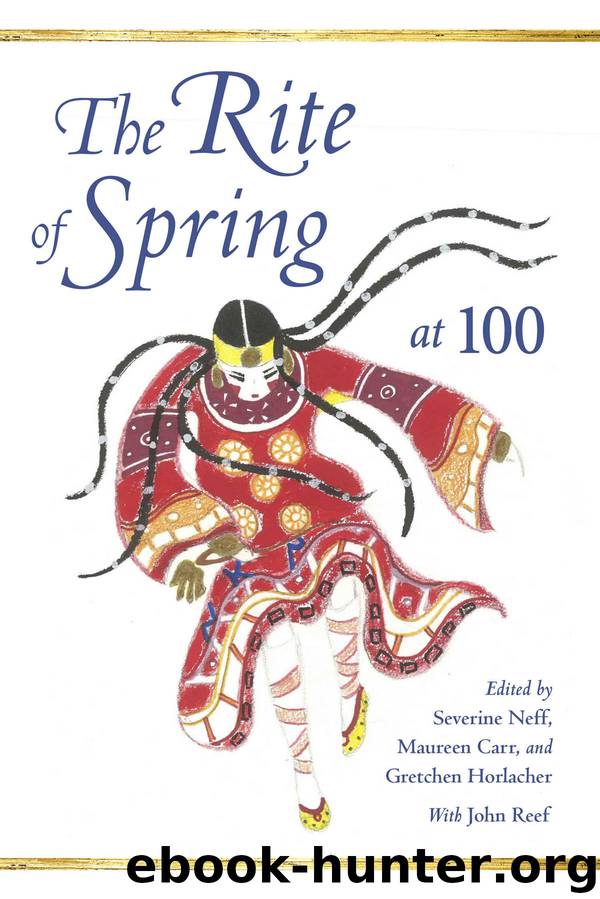The Rite of Spring At 100 by Walsh Stephen; NEFF Severine; CARR Maureen A. & Maureen Carr & Gretchen Horlacher & John Reef

Author:Walsh, Stephen; NEFF, Severine; CARR, Maureen A. & Maureen Carr & Gretchen Horlacher & John Reef
Language: eng
Format: epub
Publisher: Indiana University Press
Published: 2017-03-05T16:00:00+00:00
Musical Topoi for Earthquakes and Fear in the Works of Rameau, Rebel, and Stravinsky
The Earth is the element of the first part of Stravinsky’s ballet. Beginning with the first measure (R-13:1), the “Augurs” chord is sounded multiple times in an ostinato with irregular accents (see Example 16.1).
Multiple repetitions of a sound are a time-honored way of representing phenomena related to the element of Earth, a rhetorical figure actively used in the Baroque and later—up to Franz Joseph Haydn’s Creation. The figure, a kind of vibrato technique, was termed Bebung (i.e., “trembling”) in treatises of the time.8 This musical symbol accounts for hundreds of examples in the music of Haydn, Johann Sebastian Bach, Georg Friedrich Handel, Georg Philipp Telemann, Rameau, Marin Marais, Rebel, Christoph Willibald Gluck, and Wolfgang Amadeus Mozart.9 The figure is used as a topos for the internal shivering and trembling of the soul, for existential fear, or for the literal trembling of the earth.
Download
This site does not store any files on its server. We only index and link to content provided by other sites. Please contact the content providers to delete copyright contents if any and email us, we'll remove relevant links or contents immediately.
| Ballet | Ballroom |
| Choreography | Classical |
| Folk | Jazz |
| Modern | Notation |
| Popular | Reference |
| Tango | Tap |
Call Me by Your Name by André Aciman(18952)
Ready Player One by Cline Ernest(12828)
How to Be a Bawse: A Guide to Conquering Life by Lilly Singh(6686)
Wiseguy by Nicholas Pileggi(4581)
The Kite Runner by Khaled Hosseini(4415)
On Writing A Memoir of the Craft by Stephen King(4205)
The Crown by Robert Lacey(4098)
Audition by Ryu Murakami(4091)
Call me by your name by Andre Aciman(4064)
Harry Potter and the Cursed Child: The Journey by Harry Potter Theatrical Productions(3953)
Gerald's Game by Stephen King(3913)
The Perils of Being Moderately Famous by Soha Ali Khan(3781)
Dialogue by Robert McKee(3575)
Dynamic Alignment Through Imagery by Eric Franklin(3481)
Apollo 8 by Jeffrey Kluger(3196)
How to be Champion: My Autobiography by Sarah Millican(3180)
Seriously... I'm Kidding by Ellen DeGeneres(3098)
Darker by E L James(3086)
History of Dance, 2E by Gayle Kassing(2997)
